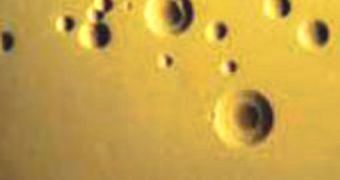In one of the most important scientific breakthroughs of the year, a team of researchers managed to finally create the world's first living organism featuring a genome synthesized by scientists. The work took more than 15 years to complete, but the results were well-worth it. The genome that laid the foundation for the new organism was designed with the help of advanced computer software, and it was assembled inside the tightly-controlled confines of a scientific laboratory, at the J. Craig Venter Institute. The efforts took $40 million to complete, LiveScience reports.
The major implication of this accomplishment is that producing artificial life will soon become possible. That is to say, geneticists will be able to create a genome out of the blue, transplant it into a donor cell that had been emptied of its own genome, and then wait for the fully-fledged, synthetic organism to grow. Details of the study were published yesterday, in the May 20 issue of the esteemed scientific journal Science. The team says that it managed to use more than 1,000 sections of DNA units, all of which had been assembled before the study began. The scientists then combined the units so as to produce the genome of the Mycoplasma mycoides bacteria.
A M. capricolum cell was afterwards emptied of its own genome, and the synthetic material placed inside. After it “caught on,” the cell began developing, and eventually started exhibiting the same behavioral patterns as a genuine M. mycoides cell. The reproductive stage of its life also took place in exactly the same manner as if the cell was an actual M. mycoides organism. “It's a culmination of a series of impressive steps. If you look over the last few years, at what they've been able to produce, it's definitely impressive. Being able to create genomes of this scale? That's impressive,” says associate professor of biological engineering Ron Weiss, who is based at the Massachusetts Institute of Technology (MIT). He was not a part of this investigation.
“This cell's lineage is the computer, it's not any other genetic code,” adds Venter Institute expert and the lead author of the paper. Daniel Gibson. He explains that all of the thousands of DNA snippets the team used to create the M. mycoides-like genome were glued together using yeast. Each of them contained about 1,080 base pairs, he added. The complete synthetic genome featured more than 1,080,000 base pairs, the team says.

 14 DAY TRIAL //
14 DAY TRIAL //